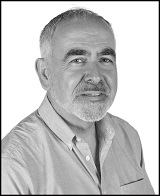Expenditure in older populations is an investment, not a cost, according to the World Health Organization (WHO)
With relatively little fanfare, the World Report on Ageing and Health—one of the most important WHO documents in recent years—was launched in New York to coincide with the UN International Day of Older Persons on 1 October. It represents a historic change of emphasis for an organisation whose focus in the past centred largely on infectious disease and childhood.
However, in a changing world with reduced child mortality and a major shift in disease patterns, non-communicable diseases (such as heart disease, stroke, cancer, and traffic accidents) now represent the major threat to global health.
In addition, although ageing is often perceived as an issue for the developed world, thanks to advances in social conditions and public health, for over a decade the majority of older people now live in low and middle income countries.
This increase in longevity is a major advance, which is comparable to the fall in child mortality in the early years of the twentieth century. However, it has not brought in its train either a significant global support apparatus (such as we see with UNICEF for children) or the same widespread recognition that the healthcare needs of older people requires a specialist approach in a manner similar to paediatrics for children.
Indeed, in striking contrast to the warm welcome for the reduction in child mortality—few spoke of the advance in terms of a demographic time bomb or as a drain in terms of resources—the reception for our increase in lifespan has been more muted, largely through unthinking ageism and short-sightedness.
It is troubling how this combination of ageism and gerontological illiteracy has led to a negative portrayal of the longevity dividend that we have created. In this we are akin to the early Spanish conquistadors in South America who didn’t recognise the worth of platinum and threw it into the sea!
So, a main challenge of this report was to demolish many of the encrusted myths surrounding ageing and, in particular, to direct this towards a readership in many countries where not only is mass ageing into later life a relatively new phenomenon, but also where few in positions of influence in government and healthcare are versed in gerontology—the sciences of ageing.
In a report which is both wide ranging and concise, the authors establish the concept of the longevity dividend: the increasing evidence that we have gained hugely from this increase in our life span. For example, in the UK older people make a net contribution of £40 billion to the economy.
The key barrier to realising this longevity dividend arises from chronic disease and inequitable health systems, rather than from ageing. This is elegantly illustrated in the disparity between increasingly able bodied, older people in the developed world and higher levels of disability among older people in low and middle income countries.
We are then led through the elements that make healthcare of older people different, including increased diversity with age—there is no typical older person. This diversity is not random, but fuelled by income, health services, environment, and inequality, all factors amenable to change. We are also reminded that old age is not synonymous with dependence, either physical or economic.
A further myth is that the ageing of our populations is a major drain on our healthcare resources: to date this has not been established. For example, in the United States between 1940 and 1990 (a period of significantly faster population ageing than has occurred since), ageing contributed only around 2% to the increase in health expenditures, while technology related changes were responsible for between 38% and 65% of growth.
These arguments then convincingly build to the proposition that expenditure in older populations is an investment, not a cost. Using a bottom-up approach from the experiences of older people and carers around the world, the four elements of a new public health approach to our ageing society are presented. These are aligning health systems to the older populations they now serve; developing systems of long term care; creating age friendly environments; and improving measurement, monitoring, and understanding of age related disease and disability.
These changes all rely on a major investment in training and education in gerontology, geriatric medicine, old age psychiatry, and gerontological nursing in the health system. The UK and Ireland have made strides in many of these areas but this report is a wake-up call to redouble our efforts. Just as this WHO report should influence other UN activities, we should also insist on synergies between UK and Irish overseas aid and ageing programmes to ensure that we too play our part in nurturing the global longevity dividend.
Desmond (Des) O’Neill is a professor of medical gerontology in Trinity College Dublin and former president of the European Union Geriatric Medicine Society. He was an external reviewer for some chapters of the WHO report.
Competing interests: None declared.
